INTERESTED PLACES
Top Must- Visit Places
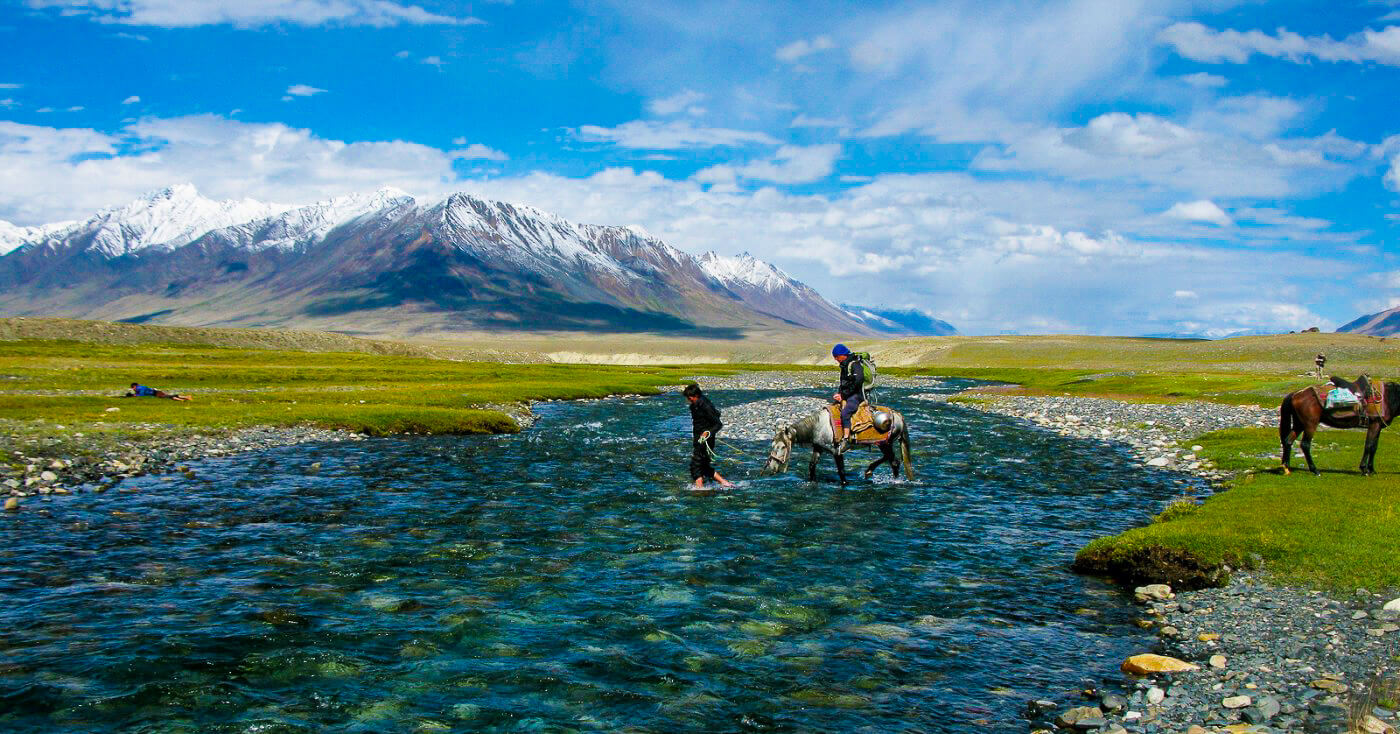
Afghanistan has a history of more than six thousand years, with many historical sights and attractions, among these are the more than two-thousand-year-old famous Buddha Statues, and Mazar-e Sharif, the beautiful city of Balkh (also known as the Mother City of all Cities), the lakes of Band-e Amir, the deep lapis lazuli blue of the waters are a shocking contrast to the plain colors of the surrounding mountains.
Afghanistan has also been of great strategic importance for invading armies, from Genghis Khan to Alexander the Great. All these armies have left astonishing trails behind, trails that have been forgotten due to decades of war but are yet to be discovered. The Government is working to rebuild the war-torn infrastructure of Afghanistan, a major project to develop transport links and a nationwide telecommunication link between Kabul and the other provinces has been established.
Tourism In Afghanistan
Tourism in Afghanistan was at its glorious best in the 1970s. Over 90,000 tourists visited Afghanistan from all over the world to see the unique beauty of the Country and experience the treat of one of the most hospitable group of people. Today, once agian, Kabul remains a fascinating city that embraces both the old and the new. The ongoing redevelopment projects, Kabul has been given a touch of modern architecture that gives the city hope of a peaceful and prosperous future.
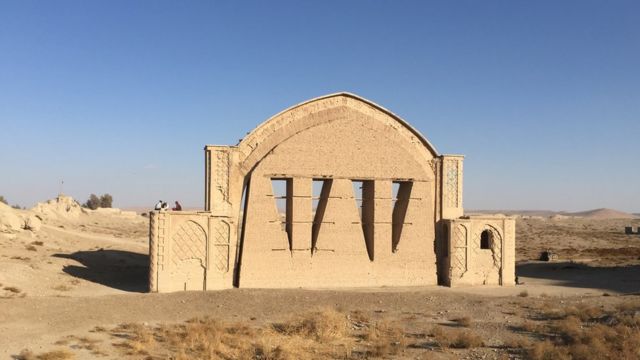
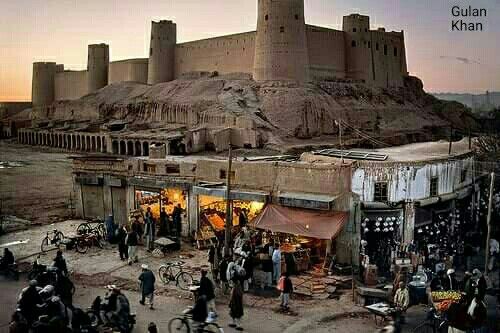
BALA HISSAR
Rising above the plain, the citadel (ca. 6th C. A.D.) served for centuries as the seat of the rulers of Afghanistan. It witnessed most of the exciting events of the country’s history until 1880 when it was destroyed during the Second Anglo-Afghan War.
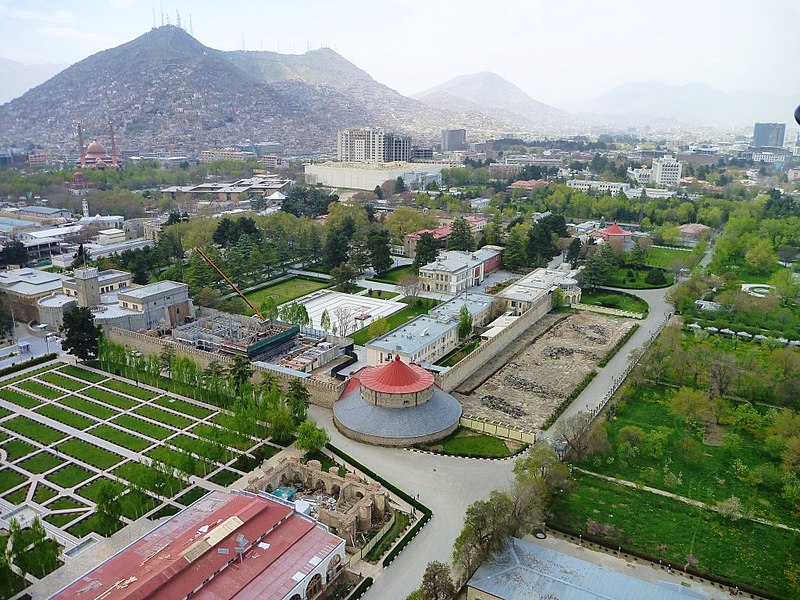
ARG
Amir Abdur Rahman (1880-1901) built this citadel to replace the Bala Hissar palaces. Within the Arg are the Salam Khana (Hall of Salutation) and the Dilkosha Palace (Heart’s Delight). Presently, it houses the Presidential Offices and Mohammad Zahir Shah, the former Monarch’s Residence.
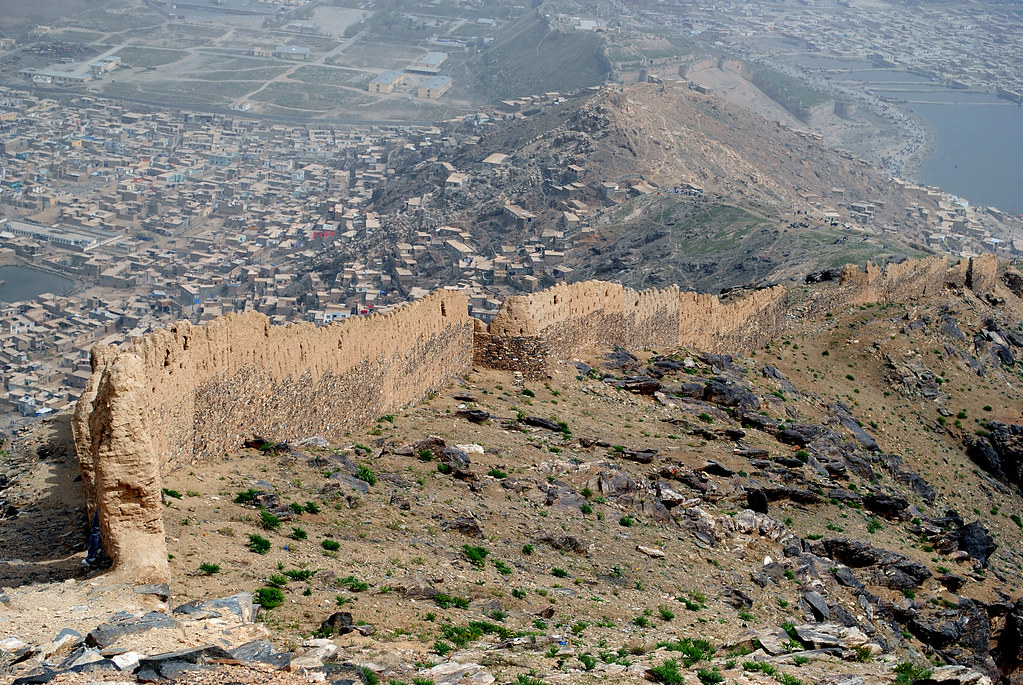
OLD CITY WALLS
The ancient walls of Kabul begin at Bala Hissar. They are 7 meters high, 3 meters thick, and assigned to the Hephthalite period (5th Century A.D.).
BABUR'S GAREDN
Laid out by Babur, the founder of the Moghul Dynasty, in the middle of the 16 th Century, the gardens include a summer pavilion added by Amir Abdur Rahman Khan, a commemorative mosque built by Emperor Shah Jahan, and the tomb of Babur himself. Babur died in Agra in 1530 but he so loved these gardens that he asked to be buried here, a wish which was fulfilled by his Afghan wife Bibi Mobaraka.
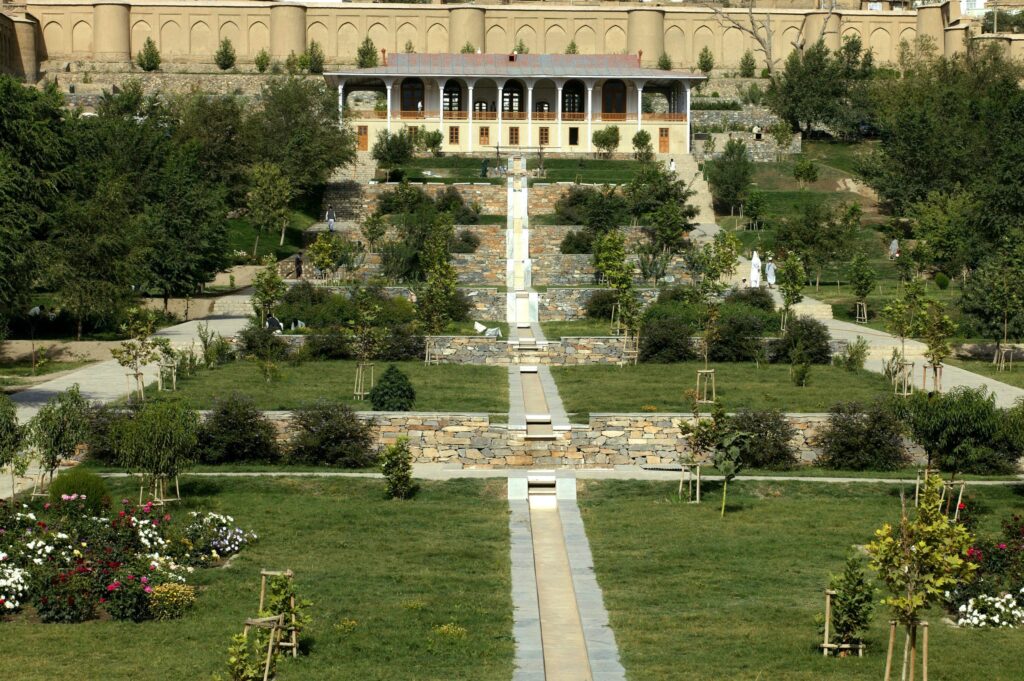
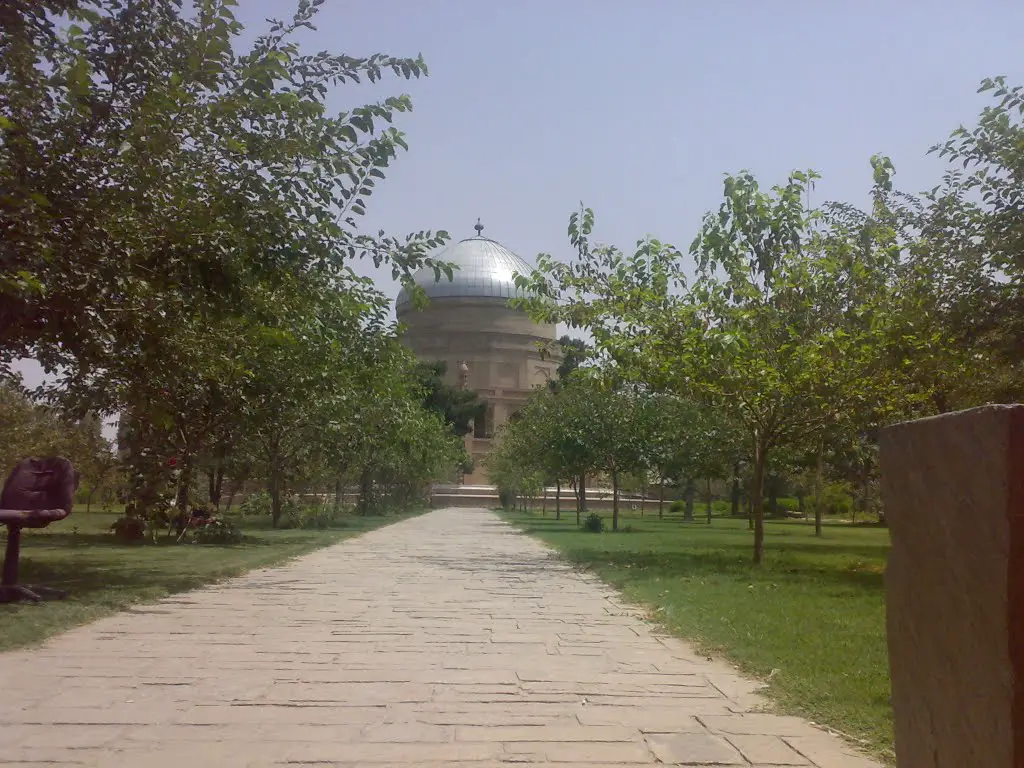
Tomb of Timur Shah
The tomb of Timur Shah, son of Ahmad Shah Durrani (The founder Afghanistan), who moved the capital from Kandahar to Kabul, was built in 1817.
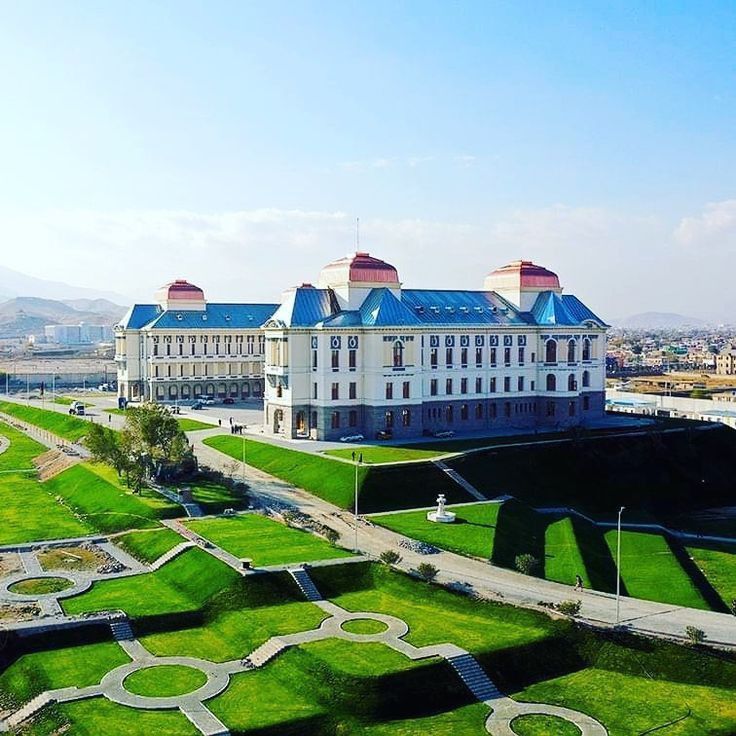
Darul Aman Palace
Darul Aman Palace is a three-story-tall palace located in Darulaman, about 16 km south-west of the center of Kabul, Afghanistan. Surrounding the palace are the following buildings: the National Assembly, the National Museum of Afghanistan and the Afghan International University. The 150-room Darul Aman Palace was originally built in the 1920s, during the reign of Amanullah Khan.
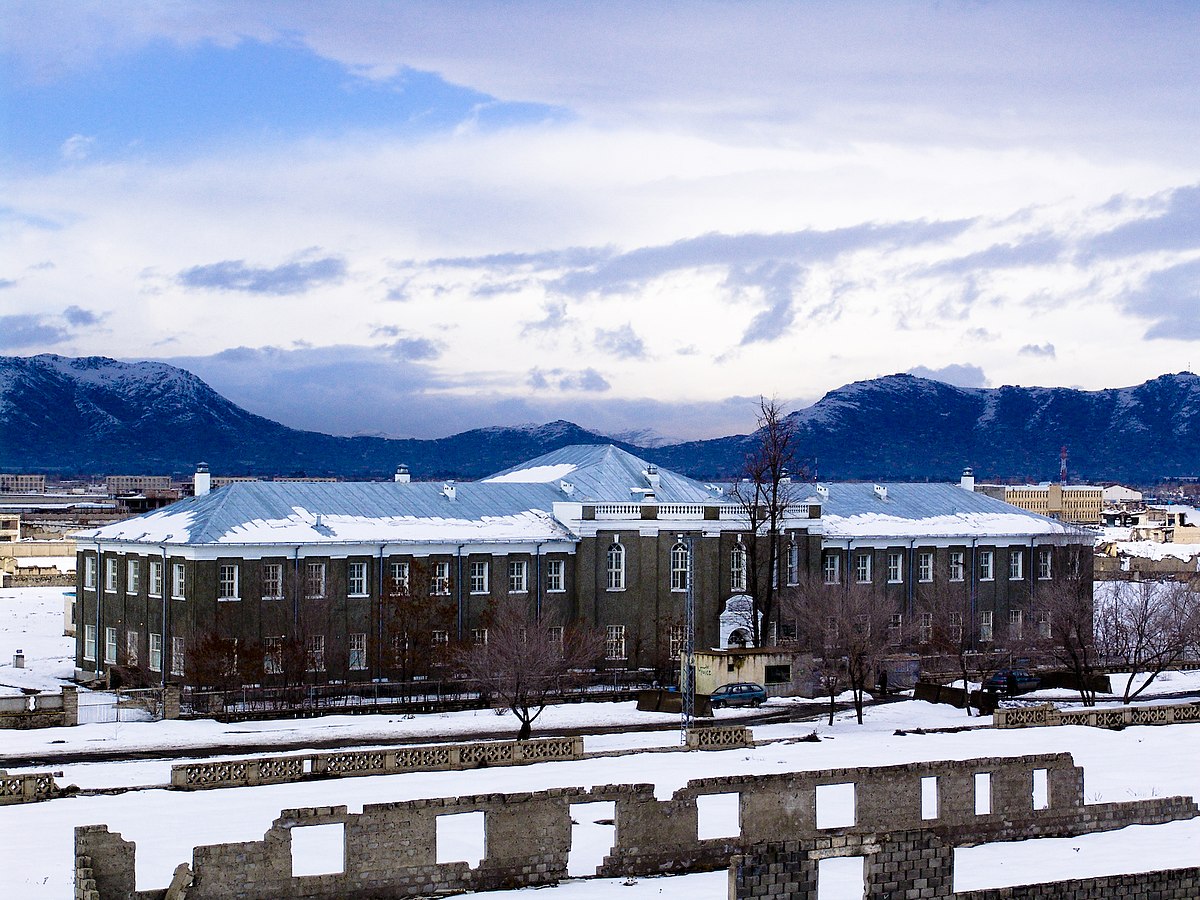
National Museum
National Museum of Afghanistan is Located at Darulaman, contains an impressive collection of artifacts illustrating Afghanistan's past from prehistory to modern times.
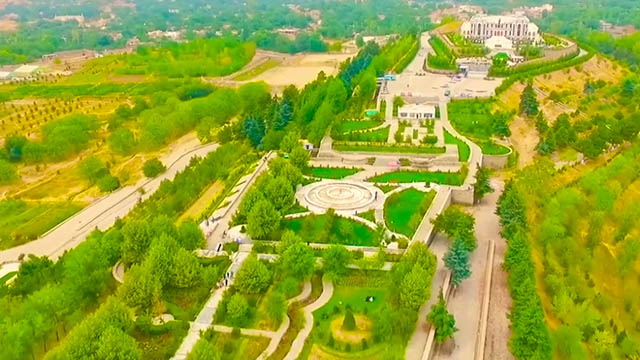
Paghman Valley, kabul
Also, Paghman has a beautiful and nice summer, unlike the capital Kabul which has a burning summer.
The Paghman valley has holding fresh cool air in all seasons of the year. Paghman Valley has a long history decade ago the president’s house, and the presidential palace was in this valley also, the president park is still there. The valley is walled from three sides by the highest mountains, and one side is open for entry and exit and a way for water. In winter, the mountains, trees, houses, and everything are covered white by the snow. The sound of birds, water, and other animals transmit the beauty of each season in this valley.
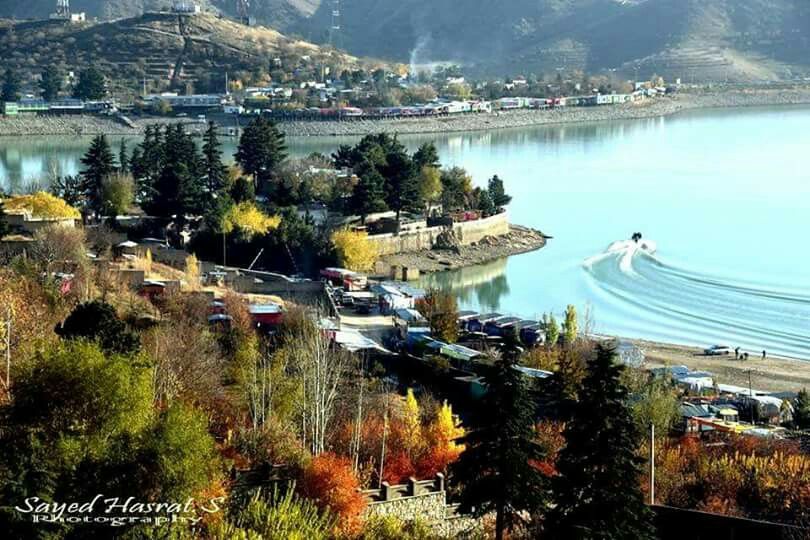
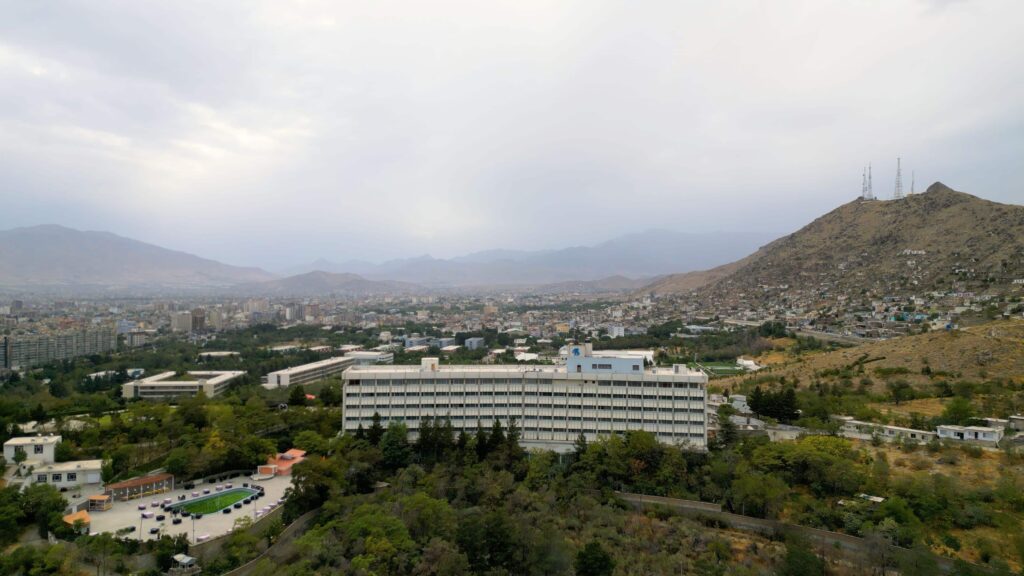
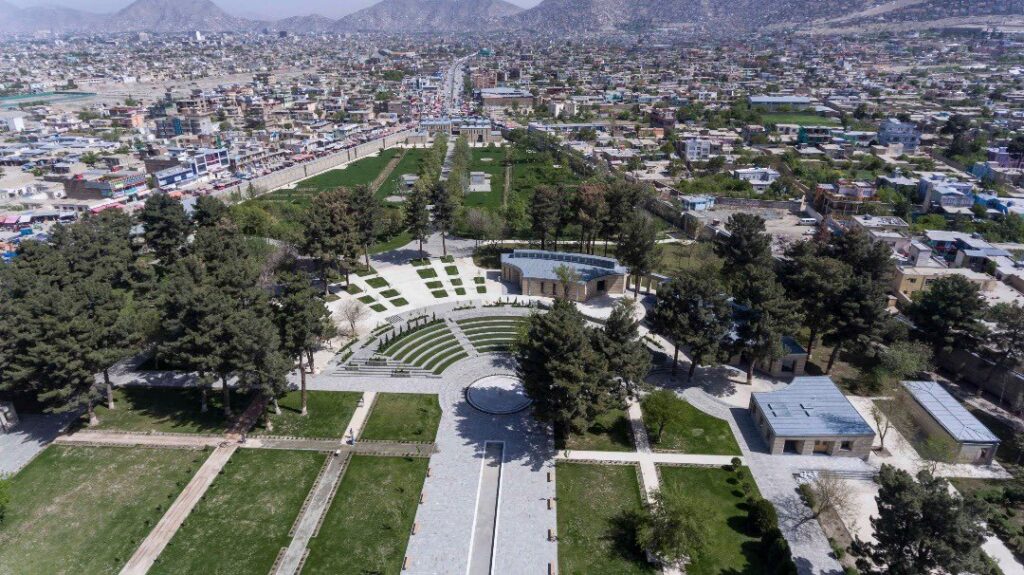

GHAZNI:
Ghazni, an important market town, particularly famous for embroidered sheepskin coats, was the dazzling capital of Ghaznavid Empire from 994-1160 encompassing much of northern India, Persia and Central Asia. Many campaigns into India were launched from here resulting in the spread if Islam to the East. This glorious city was razed to the ground by Arab invaders in 869, by the Ghorid Sultan Alauddin in 1151 and by Genghis Khan in 1221.The city did not recover its former grandeur, however, it enjoys a strategic position in the country’s economy.
Major Places of Interest in Ghazni:
The Citadel;
One of the most imposing fortresses to be seen in Afghanistan, destroyed during the First Anglo-Afghan War, rebuilt, however, but never to regain its previous splendor.
Palace of Sultan Massoud III:
The very centre of the Ghaznavid Court is a vast complex including a throne room, government offices, soldiers’ quarters, a mosque with its minarets and pockets of gardens in addition to the royal apartment.
The Minarets:
The two remaining Minarets in Ghazni, built by Sultan Masoud III (1099-1114) and Bahram Shah (1118-1152), now only a fraction of their original height, served as models for the spectacular tower of Jam (built in 1194) which in turn inspired the Qutob Minar at Delhi. The intricate decoration is in square Kufic and Noskhi script, in addition to panels of floral and geometric designs. The minaret of Sultan Masoud is more elaborate.
Other Interesting sites:
Other places of interest include the Mausoleum of Sultan Mahmud, Museum of Islamic Art, Tapa sardar Stupa and the Tomb of Fateh Khan Barakzai.
KANDAHAR
Kandahar, the birthplace and first capital of modern Afghanistan, founded by Ahmad Durrani in 1747, today home to less than a million people, is located on the Asia Highway halfway between Kabul and Herat. The area is rich with ancient history. Here, Alexander the Great founded Alexandria of Arachosia and the region was repeatedly fought over for by the Staffavids and Moghuls. It was the independent minded Afghans of Kandahar, first under the leadership of Mirwais Hotaki, its mayor and then of Ahmad Shah Durrani, who hastened the decline of both empires and annexed much of their territories to the young Afghan Kingdom in the 18 th Century.
Major Places of Interest in Kandahar:
Kherqa Sharif:
This shrine containing the cloak of the Prophet Mohammed is the most sacred one in Afghanistan. This relic was brought to Kandahar by Ahmad Shah Durrani.
Chehel Zina:
This interesting monument consists of 40 stairs leading to a chamber carved into a rock. Inside is an inscription stating that it was built by Babur, the founder of the Moghul Empire, and listing the domains of the Emperor.
Other Interesting Sites:
Zor Shar (Old City), Shrine of Haratji Baba, Shrine of Baba Wali, Charsuq (Bazar of 4 arcades).
Mausoleums of Ahmad Shah Durrani and Mir Wais
LASHKARGAH-BOST

Lashkargah is the capital of the Helmand Province, built around the Helmand Arghandab Valley Authority which seeks to transform the deserts of the region into fertile fields as green as they were centuries ago before conquerors and anarchy consigned them to their present barrenness.
Ancient Lashkargah Bost, now lies to the south of the modern administrative town. Bost is recognized in the Zoroastian hymns of the AVESTA, in Achaemenid town lists and in 1st Century accounts. These references, however, are vague but there is no doubt that the citadel was taken by Arab conquerors around 661A.D. In the 9 th Century, the city grew to become the second city of the southwest. An Arab traveler in the middle of the 11the century describes the city as: ” .one of the principle cities in the province of Seistan, except Zaranj, no city is larger. The inhabitants are polite and generous..It is a city well supplied with provision, fruits and dates.” From the 11 th until the middle of the 12 Century, Bost prospered as the winter capital of the Ghaznavids, was burned and looted in 1151 by the Ghorids and then completely demolished by Genghis Khan in 1220.
Today the remains of the great palace of Mosoud still give the visitor an idea of the splendor of the court if what was then the greatest Empire of the East. The most remarkable monument is the magnificently decorated arch which has a span of 80feet.

HERAT
This history of Herat has been one of repeated destruction and reconstruction. Conqueror after conqueror, from the time of Alexander the Great, has taken it, destroyed it and then rebuilt it. In the 4 th Century B.C. Alexander the Great built the fort which is still standing in the center of the City. From 1040 to 1175 the city was ruled by the Seljuks who defeated the Ghaznavids and destroyed the fortress. Herat was then captured by the Ghorids until the city fell under the control of the Khwarazm Empire. In 1221, Herat was taken by the Mongols and Tuli, the son of Genghis Khan, who ruled for a time, but the citizens revolted and killed the Mongol garrison chief. Extremely angered, Genghis Khan rode upon the city with 80, 000 troops and besieged it for six months, leaving only forty people living. In 1245, Herat was given to the Kart Maliks. Tamerlane destroyed Herat in 1381. However, his son, ShahRukh, rebuilt it and started the cultural renaissance which made it the center of learning and culture. During the Timurid rule, the famous poet of Herat, Jami and the miniaturist, Behzad were born, Queen Gawhar Shad’s Musalla was built and Gazergah restored. For the second time in its history, the city flourished. In 1718 the Afghan clan Chief Hotaki, struggled for Herat’s independence which continued until 1880, when finally the city became an integral part of Afghanistan.
Photo Gallery of Herat’s New face after the fundamentalist regime of Taliban
Major Places of Interest in Herat:
The Citadel:
This fort, originally built by Alexander the Great, suffered repeated attacks over the history, but still dominates the landscape of Herat. Held by the Ghaznavids, the Seljuks, the Ghorids, the Mongols, the Timurids, the Safavids and others, the citadel is a reminder of the times of kings, conquerors and great pageantry.
Masjide Jami:
This great mosque, in the center of the city has been a place of worship since the time of Zoroaster. Rebuilt several times, the mosque now stands in perfect splendor.
The Great Mosque, Herat
Gazargah:
The tomb of the famous 11 th Century poet and mystic Khaja Abdullah Ansari was restored by Shah Rukh in 1428. Inside the courtyard lies the tomb of Amir Dost Mohammad Khan.
Gawhar Shad’s Mausoleum:
This mausoleum was built for Gawhar Shad, wife of Shah Rukh, youngest son of Tamerlane. The brightly colored, ribbed domes were very popular with the Timurids.
Jami’s Tomb:
One of the greatest 15 th Century poets, Mawlana Nuruddin Abdur Rahman Jami, born in 1414, achieved widespread fame during his lifetime. He died in Herat in 1492 and is buried in a grave unadorned, save for a pistachio tree which has sprung from the tomb itself.
The Minarets:
Today, only six of the original twelve minarets remain of Queen Shad’s great Musalla complex, built in the late 1400’s. It was the Queen’s contribution to the Timurid Empire during a period of cultural accomplishments. It consisted of a madrassa or place of learning and a musalla or place of worship. These magnificent buildings flanked by the minarets had been described at one time as the most imposing and eloquent structures to be seen in all Asia.
Charsuq:
Herat’s Bazzars are full of fascination and color and were once an important trading centre at the caravan route from Europe to China. Today, items of interest to visitors include the famous hand-woven Herati Carpets and the beautiful and rustic blue glass produced by the traditional glass blowers of the city.
THE ROAD TO BALKH
The road to Balkh crosses the Hindukush via Salang Pass through the highest tunnel in the world (3363m). A drive over this pass offers, besides scenic beauty, a thrilling experience of high altitude.
En route about 240 km from Kabul (12 km from Pule khumiri) lies Surkh Kotal, site of a great religious temple, founded 130 in A.D. by Knishka the Great, King of the Kushans. It is one of Afghanistan’s most important archeological sites, which was finally burned by the Hephthalites, nomadic rivals and ultimate successor to the Kushans. 70 km further north lies Aibak, the capital of the Samangan province. 2 km nearby is an important Buddhist site, dating back to the 4th Century A.D., locally known as Takhte Rustam (Rustam’s Throne). Rustam, the hero of Firdausi’s great epic, the Shahnama (Book of Kings), written in Ghazni around 1010, married the beautiful daughter of the King of Samangan, Tahma. The stupa cave crowns the hill in front of the monastery which was most probably destroyed by Hephthalites around 460 A.D. 60 km north is Tashkurghan (Khulm) with one of the last traditional Central Asian Covered Bazzars left in Afghanistan. A stroll through this bazaar is special interest. So are the Bala Hissar, the charming palace of Amir Abdur Rahman (Baghe Jahan Numa) and the tomb of Qilich Ali Beg, the most notable ruler of Khulm (1786-1817).
MAZAR-E SHARIF
The famous blue mosque. Mazar-e Sharif
Mazar-e Sharif, the capital of Balkh province, is a major trading center famous for Karakul, a great variety of traditional Turkman carpets and high-quality, long-staple cotton. The city is named for the magnificent shrine of Hazarate Ali, cousin and son-in law of Prophet Mohammed, the Fourth Caliph of Islam. Hazarate Ali was assassinated in 661 and buried at Kufa, near Baghdad. Local tradition, however, relates that his followers, fearing enemies may take revenge on the body, placed his remains on a white she-camel which wandered until she fell exhausted.  On this spot the body was buried. All knowledge of the final resting place was lost until its existence was revealed and the great Seljuk Sultan Sanjar ordered a shrine built here in 1136. Genghis Khan destroyed this building and again the grave lay unmarked until a second revelation during the reign of the Timurid Sultan Husain Baiqara. He ordered an elaborate shrine constructed in 1481. None of the 15th Century decoration remains but modern restoration has returned the building to its original beauty. Thousands of white pigeons make their home there. Amir Sher Ali Khan lies buried here with other member of Amir Dost Mohammad’s family. The largest tomb is that of the Amir’s illustrious son, Mohammed Akbar Khan, who played a prominent role during the First Anglo-Afghan War of 1838-1842.
On this spot the body was buried. All knowledge of the final resting place was lost until its existence was revealed and the great Seljuk Sultan Sanjar ordered a shrine built here in 1136. Genghis Khan destroyed this building and again the grave lay unmarked until a second revelation during the reign of the Timurid Sultan Husain Baiqara. He ordered an elaborate shrine constructed in 1481. None of the 15th Century decoration remains but modern restoration has returned the building to its original beauty. Thousands of white pigeons make their home there. Amir Sher Ali Khan lies buried here with other member of Amir Dost Mohammad’s family. The largest tomb is that of the Amir’s illustrious son, Mohammed Akbar Khan, who played a prominent role during the First Anglo-Afghan War of 1838-1842.
Mazar-e Sharif is visited by countless pilgrims throughout the year and particularly on Nawroz (21 March) when the great Janda (religious banner) is raised to announce the beginning of spring and the coming of the New Year which is the most elaborately celebrated festival in Afghanistan.
BALKH
Balkh, today only a small town, is very famous for its glorious past. Zoroaster preached here sometime in 6th Century B.C. Rites at the shrine to Anahita, Goddess of the Oxus, attracted thousands during the 5 th Century and Alexander the Great chose it for his base in the 4 th Century B.C. Under the Kushans, when Buddhism was practiced throughout Afghanistan, many holy temples flourished in Balkh. The Arabs called Balkh Umm-ul Bilad, the ‘mother of cities’. By the 9 th Century, during the rule of the Samanid Dynasty, about 40 Friday Mosques stood within the city.
Major Places of Interest in Balkh:
 The Madressa (college) of Sayid Subhan Quli Khan.The ruins of the ancient city including the old city walls.
The Madressa (college) of Sayid Subhan Quli Khan.The ruins of the ancient city including the old city walls.
The Shrine and Mosque of Khwaja Abu Nasr Parsa.
The tomb of Rabia Balkhi.
The Masjide No Gumbad (Mosque of the nine Domes)
This exquisitely ornamented mosque, also referred to Haji Piyada, is the earliest Islamic monument yet identified in Afghanistan.
Balkhi is the home of Rabia Balkhi, the first poetess of Islamic period and of Mauwlana Jalaluddin Balkhi (Rumi), perhaps the most distinguished Sufi poet. His Masnawi is considered as the greatest poem collection ever written in the Persian language. Balkh’s glorious history closed in 1220 when the mounted men of Genghis Khan rode through and left it utterly devastated. The city, nevertheless, lying on an important trade route recovered under the enlightened rule of Shah Rukh and his Queen Gawhar Shad, of Herat.
JALALABAD-HADDA
 Jalalabad lies 150 km east of Kabul, passing Kabul Gorge, Naghlu, Sorobi and Darunta Lakes. The capital of Ningrahar province is an oasis ringed by mountains. Palaces, large gardens and tree-lined avenues speak of its long history as a favored winter capital. Today hundreds of small villas indicate its popularity as a resort town. Among many festivities taking place in this city, the most famous and outstanding are the Mushaira or Poet’s festival dedicated to Jalalabad’s orange blossoms and Waisak, a religious Hindu festival.
Jalalabad lies 150 km east of Kabul, passing Kabul Gorge, Naghlu, Sorobi and Darunta Lakes. The capital of Ningrahar province is an oasis ringed by mountains. Palaces, large gardens and tree-lined avenues speak of its long history as a favored winter capital. Today hundreds of small villas indicate its popularity as a resort town. Among many festivities taking place in this city, the most famous and outstanding are the Mushaira or Poet’s festival dedicated to Jalalabad’s orange blossoms and Waisak, a religious Hindu festival.
Seraj-ul-Emart, the residence of Amir Habibullah and King Amanullah was destroyed in 1929; the gardens however, retain vestiges of the past and offer a peaceful afternoon’s stroll. The Mausoleum of both rulers is enclosed by a garden facing Seraj-ul-Emart.
Jalalabad is a junction and as a result, a favored stopover for travelers to Nuristan and Khyber Pass.
11 km south of the city lies Hadda, one of the most sacred spots of Buddhist world dating from the 2nd to the 7th Century A.D. Countless pilgrims from every corner of the earth come to worship at its many holy temples, maintained by thousand of monks and priests living in large monastery complexes. Even during his lifetime, Buddha visited Hadda.
This important archaeologist site is still under excavation with much of it turned into an open air museum.
NURISTAN
Nuristan refers to the area of Laghman and Ningrahar inhabited by approximately 600,000 Nuristanis. The area covers approximately 5,000 square miles with five main and numerous side valleys, each inhabited by a separate tribe speaking its own language, which, in many cases are mutually unintelligible and are grouped under the name Dardic, within the Indo-European language family. There are many physical and cultural differences between the people of Nuristan and those living around them.
 The fact that they prefer stools and chairs to a rug on the floor is another obvious difference. Nuristani music is quite distinct, as are their instruments, among which the harp is certainly the most noticeable. Alexander the Great invited the young men to join his army for the Indian campaign. They proved their fighting quality with distinction. Many so-called “Greek” motifs and customs found in the Nuristani culture may well date from this experience.
The fact that they prefer stools and chairs to a rug on the floor is another obvious difference. Nuristani music is quite distinct, as are their instruments, among which the harp is certainly the most noticeable. Alexander the Great invited the young men to join his army for the Indian campaign. They proved their fighting quality with distinction. Many so-called “Greek” motifs and customs found in the Nuristani culture may well date from this experience.
Throughout the centuries that followed, the people of these mountains successfully defied conquest and conversion even as Buddhism and Hinduism were replaced by Islam on the plains below. The Muslims labeled them Kafirs because they worshipped a wide pantheon of nature spirits and practiced other customs incompatible with the Muslim religion.
In 1895 the army of Amir Abdur Rahman finally succeeded in subduing the Kafirs and converted them to Islam. When his victorious army arrived in Kabul, the Amir announced that henceforth Kafiristan (Land of the infidels) was to be known as Nuristan (Land of light).
A large part of Nuristan is inaccessible to all but those on foot for the trails are so difficult and precipitous, the foot-wide bridges, 30 feet and more above angry frothing waters, are so dizzying that horses simply cannot maneuver them.
 Perhaps the most dramatic account of the hazards of traveling in Nuristan is told by the great Tamerlane. To subdue this little pocket of dissidents would be nothing for the World Conqueror. Confidence soon turned to despair as he recounts the hardships the terrain inflicted upon him. At one point he was being lowered down the cliffs in a basket, a maneuver unbefitting his image. Equally distressing was the attempt to lower his horses down in the same manner. All but two were dashed to death against the rocks. Tamerlane ends the account of his Nuristani campaign with a prayer of thanks for his deliverance from the inhospitable Kafiristan.
Perhaps the most dramatic account of the hazards of traveling in Nuristan is told by the great Tamerlane. To subdue this little pocket of dissidents would be nothing for the World Conqueror. Confidence soon turned to despair as he recounts the hardships the terrain inflicted upon him. At one point he was being lowered down the cliffs in a basket, a maneuver unbefitting his image. Equally distressing was the attempt to lower his horses down in the same manner. All but two were dashed to death against the rocks. Tamerlane ends the account of his Nuristani campaign with a prayer of thanks for his deliverance from the inhospitable Kafiristan.
Almost all Nuristani villages are built on the tops of high peaks, the houses spill the mountainside one on top of the other, the roof of one serving as the front porch and playground of the house above. Children play vigorous games on these roofs, hanging precariously over drops of many hundreds of feet, but rarely, so say their parents, do they plunge into the depths below.
BAMIYAN
 Bamiyan, with its archeological remains, is the most conspicuous tourist site of Afghanistan. The village lies about 2500m above sea level, 240km west of Kabul and attracts thousand of visitors annually. The exquisite beauty of this valley is embraced by the snow capped range of the Kohe Baba mountains in the south and in the north by the steep cliffs in which massive images of Buddha are carved. The pastel colors of its surroundings give visitors an impression of the magnificence and serenity of nature.
Bamiyan, with its archeological remains, is the most conspicuous tourist site of Afghanistan. The village lies about 2500m above sea level, 240km west of Kabul and attracts thousand of visitors annually. The exquisite beauty of this valley is embraced by the snow capped range of the Kohe Baba mountains in the south and in the north by the steep cliffs in which massive images of Buddha are carved. The pastel colors of its surroundings give visitors an impression of the magnificence and serenity of nature.
The area of Bamiyan developed under Kanishka the Great to become a major commercial and religious center and the smaller statue of Buddha (38m high) was built during his reign. Two centuries later the colossal Buddha statue (55mhigh) was carved. Thousands of ornamented caves, inhabited by yellow robed monks, extended into Folladi and Kakrak valleys where a smaller statue of Buddha (6.5m) stands. Pilgrims from the entire Buddhist world pour into Bamiyan to admire its spectacular and sacred sites. Bamiyan fell to the Islamic conquerors in the 9th Century.
Statue of Buddha – Before
 After it was destroyed by Taliban in March 2001
After it was destroyed by Taliban in March 2001
Major Places of Interest in Bamyan:
SHARE GHOLGHOLA
 Bamiyan was destroyed by Genghis Khan in 1221 to revenge the death of his grandson Mutugen. The ruins of the citadel, called ‘city of noise’, still give evidence of its magnitude before the Mongol devastation.
Bamiyan was destroyed by Genghis Khan in 1221 to revenge the death of his grandson Mutugen. The ruins of the citadel, called ‘city of noise’, still give evidence of its magnitude before the Mongol devastation.
SHARE ZOHAK
 This mass of ruins was once a principle fortress, protecting the entrance to the city of Bamiyan during the reign of the Shansabani Kings in the 12th and 13th Centuries. It also was a victim of Genghis Khan’s vengeance.
This mass of ruins was once a principle fortress, protecting the entrance to the city of Bamiyan during the reign of the Shansabani Kings in the 12th and 13th Centuries. It also was a victim of Genghis Khan’s vengeance.
AJAR VALLEY
This beautiful valley, embraced by picturesque mountains of fascinating formations and glooming ever changing colors, with a clear sparkling stream, full of trout, leads into a breathtaking chasm and is an unforgettable site for every visitor.
BANDE AMIR
Band Amir
 Visitors to Afghanistan have marveled at the country’s natural beauty. The formidable Hindu Kush, the vast Turkestan plains, and the seclusion of the southern deserts have impressed travelers from Alexander the Great to Marco Polo. It is the unspoiled natural beauty that forms the visitor’s first and most enduring impression of the country. But of all the natural wonders of Afghanistan, the lakes of Bande Amir are perhaps the most out-standing. Situated in the mountainous Hazarajat at an altitude of approx.3000m, 75km from Bamiyan, these majestic blue lakes are of legendary beauty.
Visitors to Afghanistan have marveled at the country’s natural beauty. The formidable Hindu Kush, the vast Turkestan plains, and the seclusion of the southern deserts have impressed travelers from Alexander the Great to Marco Polo. It is the unspoiled natural beauty that forms the visitor’s first and most enduring impression of the country. But of all the natural wonders of Afghanistan, the lakes of Bande Amir are perhaps the most out-standing. Situated in the mountainous Hazarajat at an altitude of approx.3000m, 75km from Bamiyan, these majestic blue lakes are of legendary beauty.
MINARET OF JAM (Central Route)
Minaret of Jam
The Central route from Kabul to Herat is undoubtedly a fascinating experience but should only be undertaken by adventurous or pioneering travelers. Passing the first highlights, Bamiyan and Bande Amir, this route leads via Panjaw to Cheghcharan, the capital of the Ghor province. The road continues via Sharak towards north, where in a lonely, remote valley, closely surrounded on all sides by towering barren mountains stands the 65m high Minaret of Jam, at the southern bank of the Hari Rod River. Only the Qutob Minar in Delhi, built by Qutbundin after conquering India, is higher. It is the only well preserved architectural monument from the Ghorid period. En route to Herat, the Ghorid tombs of Cheste Sharif and the hot mineral springs of Obay are favored stopovers.
